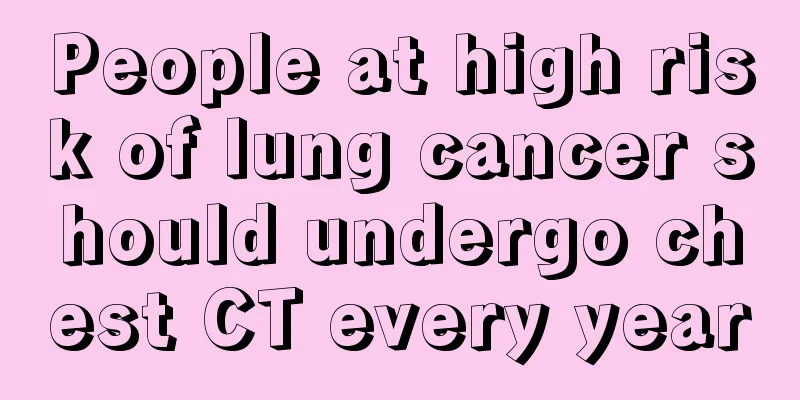Why does a stroke occur?

|
Every disease has its cause, so when we find that we have a disease, we cannot blindly choose a treatment method. We must choose a treatment method that suits us according to the cause of the disease. This will be of great help in improving the disease. So what are the causes of stroke? There are many reasons, and such diseases are also more troublesome to treat. Many people don’t know the specific causes of stroke. The following is a detailed introduction so that more of us can have a good understanding of this disease. In normal times, we can also take some preventive measures to avoid suffering from this disease. Causes of Stroke: Stroke here refers to cerebral stroke, which is acute cerebrovascular disease. Because most of its onset is relatively sudden, it is also called "cerebrovascular accident" and often called "stroke". Any disease that causes cerebral blood circulation disorders and damage to brain tissue function or structure due to cerebral blood vessel blockage or rupture can be called a stroke. Therefore, stroke can be roughly divided into two categories, namely ischemic stroke and hemorrhagic stroke, which generally refers to ischemia or hemorrhage in the cerebral arterial system. Ischemic stroke accounts for 60% to 70% of the total number of stroke patients, mainly including cerebral thrombosis and cerebral embolism. The former is caused by arterial stenosis, which gradually forms a blood clot in the lumen and eventually blocks the artery. The latter is caused by blockage of arteries by abnormal substances in the bloodstream called emboli, such as emboli that break off from blood clots in the heart of some heart patients. Whether it is cerebral thrombosis or cerebral embolism, it can be called "cerebral infarction." Some patients suffer from ischemic stroke due to gradual narrowing and eventual occlusion of cerebral arterioles, with neither blood clots nor emboli in the lumen. This condition is also called cerebral infarction. In addition, there are some patients whose cerebral blood vessels are not actually blocked, but only temporarily ischemic, which can also cause symptoms of transient brain damage, called transient ischemic attack, commonly known as "mini-stroke" or "mini-stroke." Hemorrhagic stroke accounts for 30% to 40% of stroke patients, and is divided into cerebral hemorrhage and subarachnoid hemorrhage according to the location of bleeding. Cerebral hemorrhage, commonly known as "cerebral hemorrhage", is caused by rupture of an artery in the brain, causing blood to overflow into the brain tissue. Subarachnoid hemorrhage is a rupture of a blood vessel on the surface or base of the brain, with blood flowing directly into the subarachnoid space and cerebral canal containing cerebrospinal fluid. Through the above explanation, we have some understanding of the causes of stroke. When suffering from such a disease, we must actively seek treatment, which will help improve the disease. In terms of diet, we should mainly eat light food and eat more vegetables, which will also help blood circulation. |
<<: How to treat cysts and which method is most suitable?
>>: What are the symptoms of neurasthenia?
Recommend
Is the allergic peeling going to heal soon?
The symptom of allergic peeling is relatively ser...
What are the early symptoms of nasopharyngeal cancer? How long is the average life expectancy of patients with nasopharyngeal cancer?
Nasopharyngeal carcinoma is a type of cancer that...
How to prevent gallbladder cancer from metastasizing to the liver
Gallbladder cancer is very dangerous when it deve...
What should I pay attention to with bladder cancer?
After bladder cancer surgery, the immune system i...
What are the treatments for lung cancer? The most effective treatments for lung cancer
In recent years, more and more people have been d...
Why do you get teratoma
Teratoma is a common germ cell tumor that origina...
Can pregnant women use makeup remover?
In daily life, applying and removing makeup are b...
Does e-light freckle removal have any side effects?
Nowadays, people pay more and more attention to t...
How much does skin cancer screening cost
It is very important to detect skin cancer in adv...
Massage areas to relieve migraine
Migraine is a common type of headache. Its main s...
What is the symptom of a dry tongue tip
The tongue is an important organ of the human bod...
Can formaldehyde be excreted by the human body after being inhaled?
Formaldehyde is everywhere, especially in newly r...
The first and second shots of the ninth-level cervical cancer vaccine are relatively long. How long can the interval be between them?
The first and second doses of the nine-valent cer...
What should I do if I can’t eat in the late stage of liver cancer?
What should I do if I can’t eat in the late stage...
Can I take a bath during the 30 days of confinement?
When the confinement period reaches 30 days, the ...









